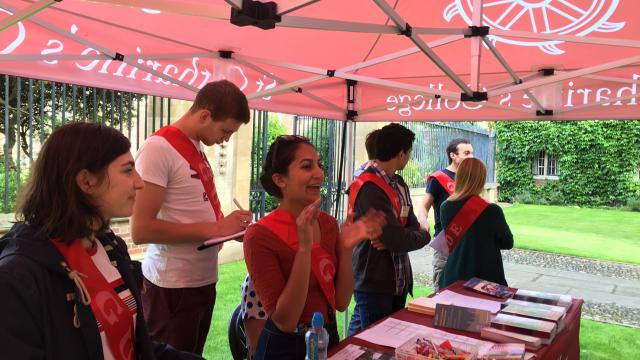
Today (10 May 2019), the Master, Fellows and students of St Catharine’s College took the decision to move a bell from its prominent position at the entrance to the College and to fund a brief period of research and consultation to determine the most relevant way to display the bell alongside any other historic links that may be discovered between the College and the slave trade. This decision was reached after consultation across the College community, and involved external experts.
Recent detailed research has confirmed that the bell, which is inscribed ‘DE CATHARINA 1772’, was found in the Demerara River, Guyana, adjacent to the historical location of the De Catharina slave plantation. One use of such bells on plantations was to control the work cycles of enslaved men, women, and children. The bell was presented to the College by a former student in 1960 and was moved to its current prominent position in 1994. Apart from its recovery and presentation by a former student, there is no other historical connection between the College and the bell.
Master of St Catharine’s, Professor Sir Mark Welland, said: “Having learned the provenance of the bell, the College community rightly decided that it must be moved from its present position but that its history and associations must not be hidden away. On the contrary, by committing the College to research into historical links with slavery, we make the bell a focus for honest discussion and reflection.”
Senior Tutor Dr Miranda Griffin said: “Once our students have completed their exams this term, we will take further steps to ensure that the bell is displayed in an appropriate setting. Our responsibility as an academic community is always to question the way in which our past influences our present and future. We have embraced this opportunity for the College to learn more about our heritage and how we represent it as an outward-facing institution in the twenty-first century.”




